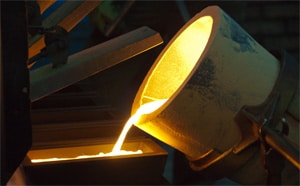MILESTONES: GLOBAL
By Valentina Pasquali
Over the past few years markets have experienced declining trust in fiat money, a slow departure from the US dollar as a reserve currency and growing interest in bullion, particularly as a hedge against uncertainties.

“Precious metals are very good long-term investments,” says Matt Zeman of Kingsview Financial in Chicago. “Gold and silver have been on nice, long up trends, and people think they can go in and buy at certain points and make money with those instruments.”
Gold Bullion International (GBI), a company that purchases and stores precious metals on behalf of investors, is now trying out new ways to ride the bullion wave with a program that makes it possible for all publicly traded companies to pay out dividends in physical gold and silver (instead of cash or stocks) to shareholders who choose to receive them. “To pay dividends in the form of precious metals could be appealing to investors,” says Zeman, “because they do want to add them to their portfolios for some diversification.”
Bart Melek of TD Securities in Toronto agrees in part that the idea could work. “Except that for smaller investors it may be expensive to convert the bullion into cash,” he says. “For accounting and other efficiency reasons, it is likely better to give cash and let investors decide what they want to do with it.”
The program already has one taker, mining company Gold Resource Corporation. “We had been hearing a lot, particularly from mining companies, of the desire to return capital to shareholders in the form of physical gold or silver or whatever commodities they mine, but nobody had figured out how to do it efficiently and cost effectively,” says GBI’s CEO Savneet Singh. “We thought it would be a great way to innovate in a field that had not been innovated since the beginning of the market.” Although the mining sector has shown the most interest thus far, GBI’s CEO adds that the service is available to all listed companies.
“It can be advantageous for companies that have matured and find it difficult to put new projects in place at a rate and size that would very materially change their production profile,” says TD Securities’ Melek. “Yet, if they have an ability to make a profit because they are very low on the cost curve, this could be a way to give yield to investors that might make them happy.”



